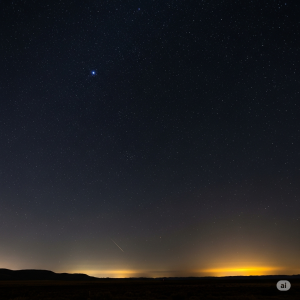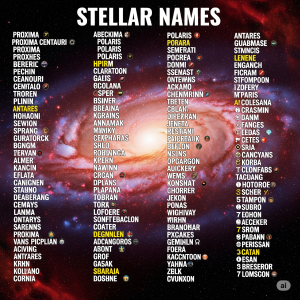How to Identify Stars: A Complete Guide for Stargazers
Introduction
The night sky has fascinated humanity for millennia. From ancient civilizations charting the stars for navigation to modern astronomers decoding the cosmos, stars remain a subject of awe and curiosity. But for many enthusiasts, one question stands out: How can I identify stars in the sky?
Whether you are a beginner or an amateur astronomer, learning to identify stars can be a deeply rewarding experience. This guide will walk you through the science, tools, and practical methods to help you recognize and name the twinkling dots that fill the night sky.
1. Understanding What Stars Are How to identify stars
Before diving into how to identify them, it’s essential to understand what stars are.
This energy radiates as light and heat, making them visible across vast distances in space. The Sun is the closest star to Earth, but there are billions more scattered across the galaxy.
Types of Stars:
- Main Sequence Stars (e.g., our Sun)
- Red Giants
- White Dwarfs
- Neutron Stars
- Supergiants
Each type varies in size, brightness, and color, which are critical clues in star identification.
2. Why Learn to Identify Stars How to identify star
Knowing how to identify stars enriches your connection with the universe and offers several benefits:
- Navigational Aid: Sailors and travelers have used stars for direction.
- Educational Tool: Astronomy promotes critical thinking and curiosity.
- Mental Well-being: Stargazing can be calming and meditative.
- Scientific Inquiry: Amateur astronomers contribute valuable data to research.
3. Best Time and Conditions for Stargazing
To accurately identify stars, timing and environmental conditions play a significant role.
Ideal Conditions:
- Clear skies: No clouds or haze.
- New Moon phase: Less moonlight = darker skies.
- Minimal light pollution: Rural areas are best.
- High altitude: Reduces atmospheric distortion.
Best Time of Night How to identify stars
- After 9 PM in most seasons.
- During winter, the air is usually clearer.
4. Tools and Equipment for Star Identification
You don’t need a telescope to begin stargazing. Here are essential and optional tools:
Essentials:
- Star Chart (Planisphere): A rotating map that shows visible stars for a specific time/date.
- Compass: Helps you align yourself with the cardinal directions.
- Red Flashlight: Preserves your night vision while reading charts.
Optional but Helpful:
- Binoculars (7×50 recommended)
- Smartphone apps: SkyView, Star Walk, Stellarium
- Telescope: For detailed observations
5. Learning the Night Sky: Step-by-Step How to identify stars

Step 1: Locate the Cardinal Directions
Start by orienting yourself—use a compass or smartphone to find north, south, east, and west.
Step 2: Start with the Brightest How to identify stars
Bright stars are easiest to identify. Some of the most prominent include:
- Sirius (Canis Major): Brightest star visible from Earth.
- Betelgeuse (Orion): Red giant; appears orange.
- Rigel (Orion): Blue-white star.
- Vega (Lyra): Part of the Summer Triangle.
Step 3: Use Constellations
Stars form patterns called constellations. Learn the major ones first:
- Orion (The Hunter): Recognizable by the three stars in Orion’s Belt.
- Ursa Major (The Big Dipper): Helps locate Polaris.
- Cassiopeia (The Queen): W-shaped constellation.
- Scorpius: Prominent in summer skies.
Step 4: Follow Seasonal Star Maps How to identify stars
The sky changes as Earth orbits the Sun. Use season-specific charts:
- Winter: Orion, Taurus, Canis Major
- Spring: Leo, Virgo, Bootes
- Summer: Lyra, Cygnus, Scorpius
- Autumn: Pegasus, Andromeda, Aquarius
6. Understanding Star Magnitudes and Colors
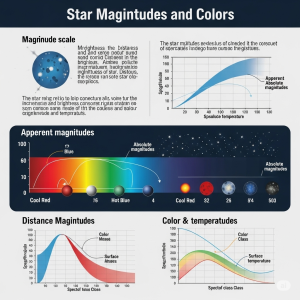
Star Magnitude:
Refers to brightness. 1st magnitude: Very bright (e.g., Sirius)
- 6th magnitude: Faintest visible to the naked eye
Star Colors:
Colors indicate temperature and age.
- Blue: Hottest (e.g., Vega, Rigel)
- White/Yellow: Medium-hot (e.g., Sun, Capella)
- Orange/Red: Cooler (e.g., Betelgeuse)
Knowing the color helps identify and differentiate stars.
7. Using Technology to Identify How to identify stars
Modern tools make stargazing more accessible than ever.
Apps and Software:
- Star Walk 2: Real-time overlays with educational facts.
- Stellarium: Desktop planetarium software.
- SkySafari: More advanced, used by amateur astronomers.
These apps use GPS and AR (augmented reality) to align your screen with real-time sky positions.
8. Common Mistakes to Avoid How to identify stars

While identifying stars, avoid these pitfalls:
- Confusing Planets with Stars: Planets don’t twinkle and move slightly night-to-night.
- Relying on memory: Always cross-check with a star map.
- Ignoring light pollution: It limits what you can see.
Being patient and systematic will make you more accurate.
9. Recognizing Star Clusters and Special Patterns
Beyond single stars, look for:
Star Clusters How to identify stars
- Pleiades (Seven Sisters): Small cluster in Taurus, looks like a mini-dipper.
- Hyades: V-shaped cluster near Aldebaran.
Asterisms:
Informal patterns of stars.
- Big Dipper: Part of Ursa Major.
- Summer Triangle: Vega, Deneb, and Altair.
Learning these helps create mental anchors to navigate the sky.
10. Deepening Your Knowledge: Star Catalogs and Naming
Star Naming:
Some stars have traditional names (e.g., Sirius, Vega). Others are cataloged:
- Bayer Designation: Greek letter + constellation (e.g., Alpha Centauri)
- Flamsteed Numbers
- HIP and HD Catalogs: From Hipparcos and Henry Draper catalogs.
Learning cataloging systems helps when using advanced tools and telescopes.
11. Tracking the Motion of How to identify stars
- Diurnal Motion: Stars rise in the east, set in the west.
- Circumpolar Stars: Never set; revolve around Polaris (e.g., Ursa Major in Northern Hemisphere).
Understanding these motions is crucial for long-term observation.
12. Connecting Mythology and Culture How to identify stars
Throughout history, stars were central to myths, stories, and calendars.
- Orion: The Greek hunter.
- Scorpius: Sent to kill Orion.
- Pleiades: Daughters of Atlas.
Different cultures have unique interpretations—Indian, Chinese, Native American, and Arabic traditions all offer rich astronomical lore.
13. Practice Makes Perfect How to identify stars
Stargazing is a skill that improves with repetition.
Tips:
- Keep a star log: Record what you see each night.
- Join a stargazing group or astronomy club.
- Attend star parties: Organized public events for telescope viewing.
- Use a telescope or binoculars once you’re familiar with major stars.
14. Night Sky Events to Watch How to identify stars
Tracking specific celestial events helps identify stars and patterns:
- Meteor Showers: Like the Perseids (August), Geminids (December)
- Eclipses: Lunar and solar
- Conjunctions: When planets align or come close to stars
15. Identifying Stars from Different Hemispheres
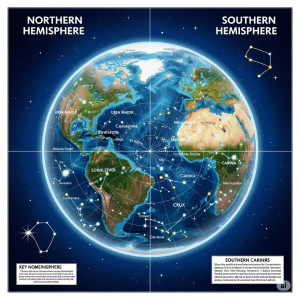
Your location on Earth affects visibility.
Northern Hemisphere Highlights:
- Polaris (North Star)
- Ursa Major
- Orion
Southern Hemisphere Highlights:
- Crux (Southern Cross)
- Alpha Centauri
- Carina
If you travel, you’ll encounter new constellations. Star maps are location-specific.
- How Ancient Civilizations Identified Stars
Long before modern telescopes and apps, ancient people developed sophisticated ways to chart the heavens. Understanding their methods can enhance your appreciation for star identification today.
Egyptian Astronomy:
- Used Sirius (Sopdet) to predict the Nile flood.
- Aligned pyramids and temples with stellar points.
Greek Contributions:
- Hipparchus cataloged 850 stars.
- Ptolemy’s Almagest listed 48 constellations.
Indian Astronomy
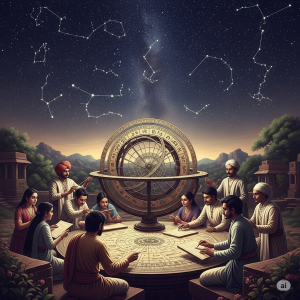
- Vedic texts mention Nakshatras (lunar mansions), a stellar calendar system still used in Jyotish (Vedic astrology).
- Stars like Rohini (Aldebaran) and Krittika (Pleiades) held spiritual importance.
Chinese Sky Lore How to identify stars
- Many constellations differ from the Western system.
Learning about these ancient systems opens up a cross-cultural perspective on star recognition.
17. Advanced Techniques: Star-Hopping
Once you’ve learned the basics, star-hopping becomes an invaluable tool—especially for finding deep-sky objects.
What is Star-Hopping?
It’s the method of using known stars as stepping stones to locate fainter stars or celestial targets.
Example:
To find Andromeda Galaxy (M31):
- Locate the Great Square of Pegasus.
- Move to Andromeda constellation.
- Hop along the stars Alpheratz → Mirach → Mu Andromedae → M31.
This technique builds confidence and sharpens your navigational skills in the sky.
18. Observing Variable Stars How to identify stars
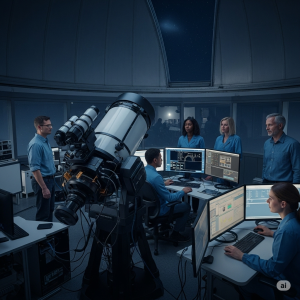
Not all stars shine consistently—some vary in brightness.
Types of Variable Stars:
- Intrinsic: Changes in luminosity (e.g., Cepheids)
- Extrinsic: Changes due to eclipses (e.g., Algol)
Amateur astronomers can contribute data to organizations like the American Association of Variable Star Observers (AAVSO).
Learning to track these stars not only deepens your skill but also connects you to ongoing scientific research.
19. Recognizing Binary and Multiple Star Systems
Many stars you see as one point of light are actually multiple star systems.
Examples:
- Albireo (in Cygnus): A striking blue and gold double star.
- Mizar and Alcor: In the Big Dipper’s handle; test of good eyesight in ancient cultures.
Some are visual binaries (you can split them with a telescope), while others are spectroscopic binaries, requiring more advanced equipment.
20. Tracking Stars with a Telescope How to identify stars

Once you’re comfortable with star identification using the naked eye and binoculars, a telescope can enhance your exploration.
Tips for Telescope Star Finding:
- Align your finderscope with a known star.
- Use low power eyepieces for wide field.
- Apply slow-motion controls to track stars as they move.
- Use celestial coordinates (RA/Dec) for pinpoint accuracy.
Even a small 70mm refractor can reveal double stars, color differences, and deep-sky neighbors.
21. How Light Pollution Affects Star Visibility
Light Pollution Zones (Bortle Scale):
- Class 1: Pristine dark sky
- Class 9: Inner-city sky, only brightest stars visible
Solutions:
- Travel to dark-sky reserves (e.g., Ladakh, Rann of Kutch in India).
- Use light pollution filters on telescopes.
- Advocate for responsible outdoor lighting.
Apps like Dark Sky Finder can help you locate optimal viewing locations.
22. Keeping a Stargazing Journal How to identify stars
Recording your experiences reinforces learning and enhances your observational accuracy.
What to Note:
- Date/time/location
- Weather and sky conditions
- Stars/constellations observed
- Notes on color, brightness, patterns
- Sketches or smartphone photos
Over time, your journal becomes a personal sky atlas—a roadmap of your growing expertise.
23. The Psychological and Emotional Impact of Stargazing
Identifying stars is not just an intellectual activity—it can profoundly impact your mental state.
Psychological Benefits How to identify stars
- Reduces anxiety: Shifts focus from personal stress to cosmic wonder.
- Promotes mindfulness: Slows your thoughts, enhances awareness.
- Boosts creativity: Inspires reflection and insight.
For platforms like nightthinkers.in, linking stargazing with mental well-being can resonate with your audience.
24. Fun Star-Spotting Challenges for Beginners
Make learning fun with these beginner-friendly challenges:
- Find Polaris using the Big Dipper.
- Spot the Pleiades without binoculars.
- Draw a star map of what you see from your backyard.
- Track the moon’s path across a week.
Gamifying your sessions helps you stay engaged and learn faster.
25. Joining the Star Community How to identify stars
Being part of a community enhances your stargazing journey.
Ways to Connect:
- Join local astronomy clubs or Facebook groups.
- Attend astronomy festivals like Star Party India or AstroNomad events.
- Participate in online forums: Cloudy Nights, Reddit’s r/Astronomy.
You’ll meet people who can guide you, recommend equipment, and share rare celestial moments.
26. Identifying Stars in Urban Environments
Many people live in cities with intense light pollution—but you can still stargaze effectively.
Strategies for Urban Stargazing:
- Focus on the brightest stars: Sirius, Vega, Arcturus, Capella, etc.
- Observe from rooftops or terraces: Higher altitudes minimize horizon light.
- Use apps to compensate for missing constellations due to light pollution.
- Schedule trips during new moons for better viewing in suburbs or rural areas.
Even from a city, you can see 20–30 stars and major constellations with the naked eye.
27. How to Teach Star Identification to Children

Introducing kids to the night sky can inspire lifelong curiosity.
Tips for Teaching
- Use stories and myths: Like Orion’s hunting tale or the Seven Sisters.
- Give them a red flashlight: Make them feel like real explorers.
- Use stargazing apps with AR visuals
- Turn it into a treasure hunt: “Find the W-shaped constellation (Cassiopeia)!”
Make it fun, simple, and magical. Kids remember the stars you connect to a story.
28. How to Identify Stars Without Any Tools
In remote or spontaneous situations, you might not have access to maps or apps.
No-Tool Star ID Tips:
- Look for patterns: Orion’s Belt (three stars in a row), the Big Dipper.
- Identify the North Star: Use the “pointer stars” of the Big Dipper.
- Note color and brightness: Blue = hot; Red = cool.
Experience will gradually help you recognize constellations intuitively—even without guidance.
29. The Science of Star Lifecycles (And How It Helps ID Stars)
Understanding stellar evolution adds richness to your identification process.
Lifecycle Overview:
- Nebula → Protostar
- Main Sequence Star (e.g., our Sun)
- Red Giant or Supergiant
- White Dwarf / Neutron Star / Black Hole
Each stage has observable traits:
- Red Giants (e.g., Betelgeuse) are large and red-orange.
- Main Sequence stars (e.g., Sirius) are mid-life, hot and bright.
- White Dwarfs (e.g., Sirius B) are dim and small—visible only with a telescope.
This scientific understanding improves your long-term observation skills.
30. Frequently Misidentified “Stars How to identify stars
Not everything bright in the night sky is a star!
Common Confusions:
- Planets: Venus, Jupiter, and Mars often outshine stars. They don’t twinkle and move slightly night-to-night.
- Satellites: Iridium flares and the International Space Station are fast-moving lights.
- Airplanes/Drones: Flashing colored lights are a giveaway.
- Shooting Stars: These are meteors—dust or rocks burning in Earth’s atmosphere.
Knowing these distinctions refines your ability to accurately spot real stars.
31. Star Naming Conventions and Fun Facts
Stars have multiple naming systems:
Traditional Names:
- Derived from Arabic, Greek, or Latin (e.g., Aldebaran = “The Follower” in Arabic)
Scientific Catalogs:
- Bayer: Greek letter + constellation (e.g., Alpha Centauri)
- Flamsteed: Number + constellation (e.g., 61 Cygni)
- HIP/HD: Hipparcos/Henry Draper designations used in astronomy databases.
Fun Fact:
The International Astronomical Union (IAU) is the only body that can officially name stars. “Buying a star name” is symbolic but not scientific.
32. The Top 10 Brightest Stars (How to Recognize Them)
| Star Name | Magnitude | Constellation | Color | Season Visible |
| Sirius | -1.46 | Canis Major | Blue-white | Winter |
| Canopus | -0.74 | Carina | Yellow-white | Southern Only |
| Arcturus | -0.05 | Boötes | Orange | Spring/Summer |
| Vega | 0.03 | Lyra | Blue-white | Summer |
| Capella | 0.08 | Auriga | Yellow | Winter |
| Rigel | 0.12 | Orion | Blue-white | Winter |
| Procyon | 0.38 | Canis Minor | White | Winter |
| Betelgeuse | 0.42 | Orion | Red | Winter |
| Achernar | 0.46 | Eridanus | Blue-white | Southern Only |
| Altair | 0.77 | Aquila | White | Summer |
33. Star Identification and Cultural Astronomy

Every culture has their own celestial stories.
Indian Nakshatras:
- Used in Vedic astrology (Jyotish).
- 27 or 28 lunar mansions.
- Key stars: Rohini (Aldebaran), Krittika (Pleiades), Revati (Zeta Piscium)
Aboriginal Astronomy:
- Orion = “Three Young Men.”
- Emu in the Sky: A dark cloud constellation, not made of stars but space between them.
Understanding cultural astronomy adds emotional and historic meaning to the stars you see.
34. Resources to Continue Your Star Journey
Want to go deeper?
Books:
- NightWatch by Terence Dickinson
- Turn Left at Orion by Guy Consolmagno
- The Stars by H.A. Rey
Online Platforms:
Free Courses:
- Coursera: “Astronomy: Exploring Time and Space”
- edX: “The Constellations and Their Stars”


